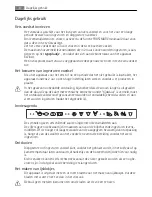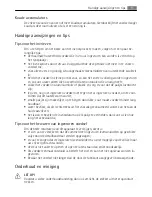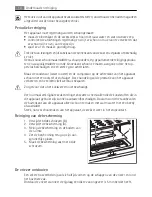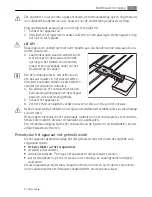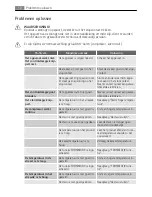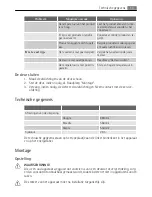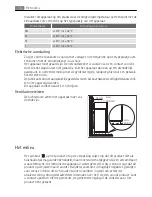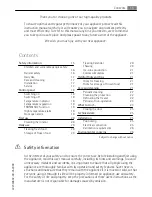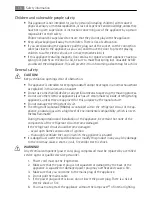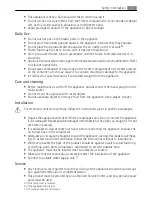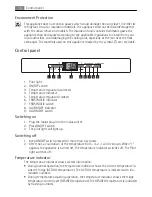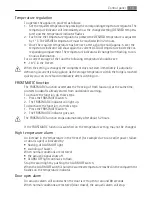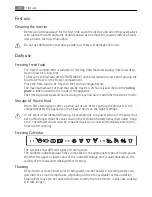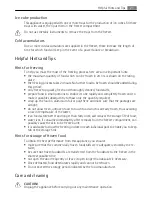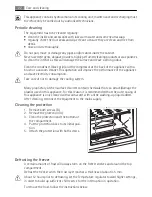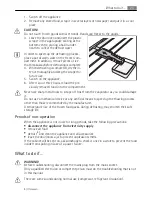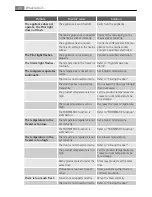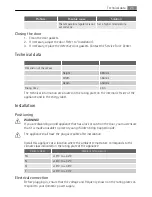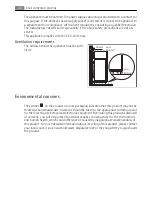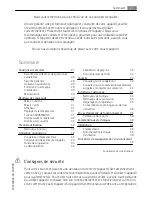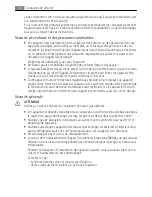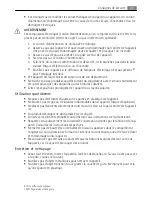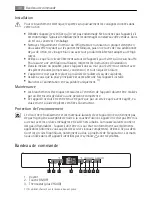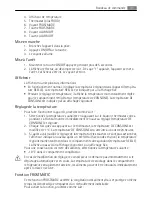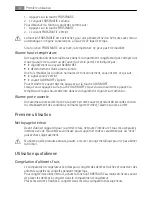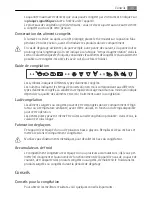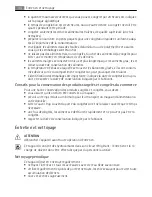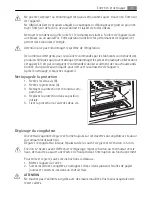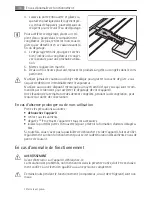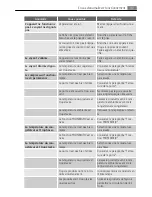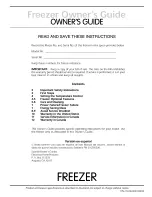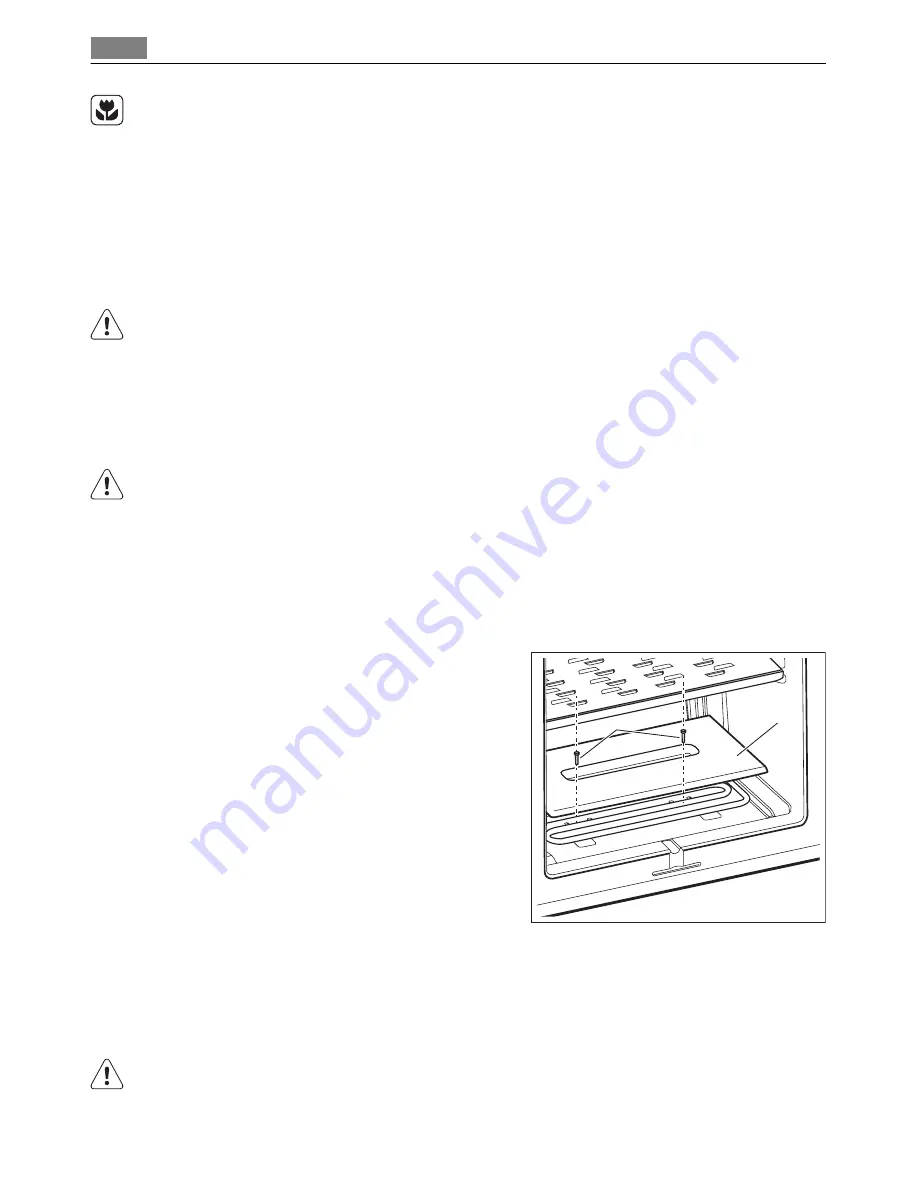
This appliance contains hydrocarbons in its cooling unit; maintenance and recharging must
therefore only be carried out by authorized technicians.
Periodic cleaning
The equipment has to be cleaned regularly:
• clean the inside and accessories with lukewarm water and some neutral soap.
• regularly check the door seals and wipe clean to ensure they are clean and free from
debris.
• rinse and dry thoroughly.
Do not pull, move or damage any pipes and/or cables inside the cabinet.
Never use detergents, abrasive powders, highly perfumed cleaning products or wax polishes
to clean the interior as this will damage the surface and leave a strong odour.
Clean the condenser (black grill) and the compressor at the back of the appliance with a
brush or a vacuum cleaner. This operation will improve the performance of the appliance
and save electricity consumption.
Take care of not to damage the cooling system.
Many proprietary kitchen surface cleaners contain chemicals that can attack/damage the
plastics used in this appliance. For this reason it is recommended that the outer casing of
this appliance is only cleaned with warm water with a little washing
-
up liquid added.
After cleaning, reconnect the equipment to the mains supply.
Cleaning the protection
1. Remove both screws (B).
2. Remove the protection (A).
3. Clean the protection and the bottom of
the compartment.
4. Put the protection back to its initial posi-
tion.
5. Attach the protection with both screws.
Defrosting the freezer
A certain amount of frost will always form on the freezer shelves and around the top
compartment.
Defrost the freezer when the frost layer reaches a thickness of about 3
-
5 mm.
About 12 hours prior to defrosting, set the Temperature regulator toward higher settings ,
in order to build up sufficient chill reserve for the interruption in operation.
To remove the frost, follow the instructions below:
A
B
22
Care and cleaning

